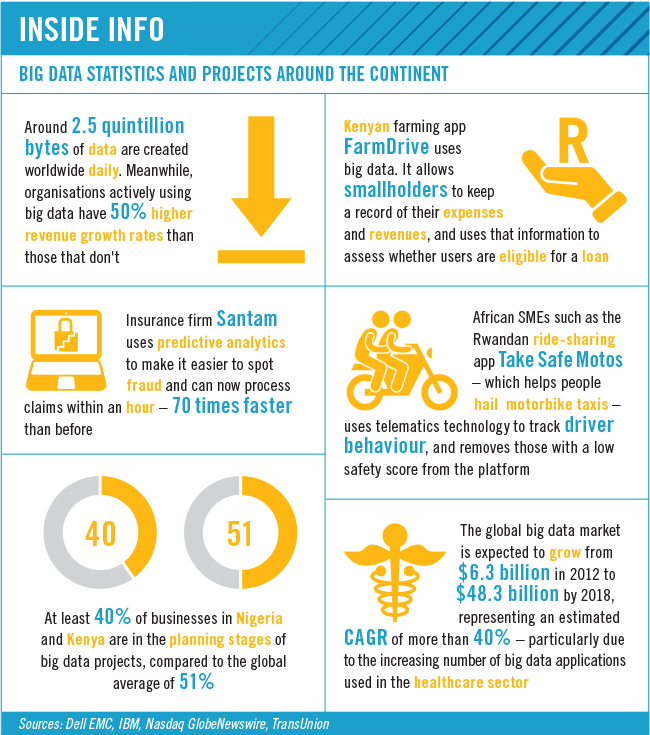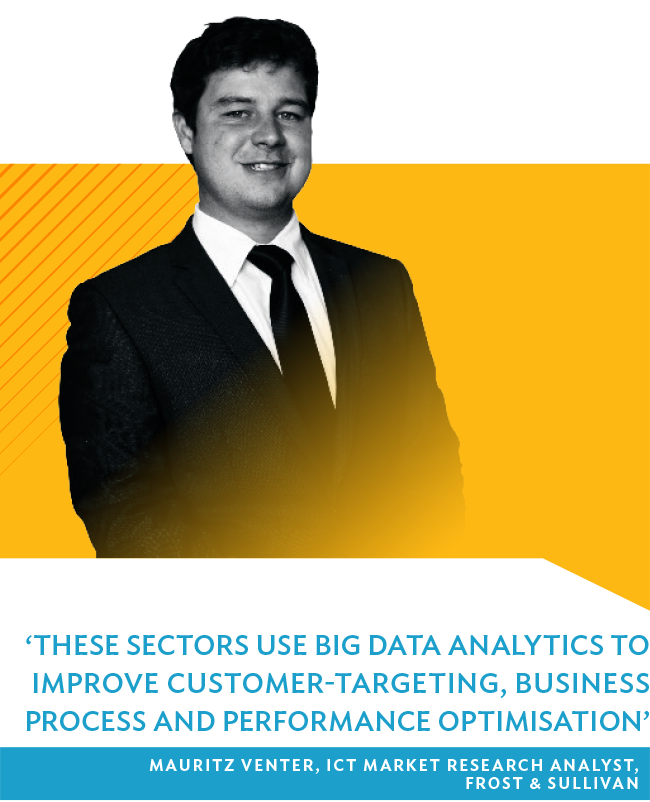Globally speaking, the term ‘big data’ has been used since the late 1990s and stems from the masses of data now available to businesses through the widespread adoption of new and cutting-edge technologies – ranging from social media, to e-commerce, to machine-to-machine learning.
In 2001, research by META Group (Gartner) cast the new data challenge as a 3D model, based on three Vs – volume, velocity and variety. Both the public and private sector became – and still is – bombarded with a huge volume of data made available for the first time thanks to new connected technologies, with data flowing in and out at an unprecedented speed. The data becoming available is also of such a variety (text, images, audio, videos and so on) that organisations find themselves unsure of how to deal with it.
Over the 25 years since big data started emerging as a concept, the challenge for the public and private sector globally has been to develop mechanisms of coherently collecting, ordering, storing and analysing data inflows, with a view to unlocking new market insights and, as a result, boosting business.
Like their counterparts worldwide, SA businesses are also beginning to look for ways to benefit from the huge mass of data now becoming more readily available. While leading connected technologies may have taken slightly longer to reach SA, today the public and private sector is faced with the same big data pressure as in other regions.
According to Mauritz Venter, ICT market research analyst at Frost & Sullivan, in SA the move to adopt big data analytics technologies is particularly apparent in the retail, telecoms and financial sectors.
‘These sectors primarily use big data analytics to improve customer-targeting capabilities, business process and performance optimisation, and support new internet of things and mobile application functions, like customer in-store behaviour tracking in the retail sector,’ he says.
Venter adds that the benefits of big data to businesses can be divided into two key categories. On the one hand, big data analytics affords organisations heightened understanding of their own internal business processes, which paves the way to improved efficiency, productivity and reduced costs.
The second set of benefits comprise a more in-depth understanding of clients’ needs. ‘This has a notable effect on the business’ marketing capabilities, enabling highly targeted and hyper-personalised campaigns.’
Big data analytics are already being successfully implemented across SA’s industries. Venter cites examples ranging from the use of big data to improve consumer offerings in the fitness and food delivery spaces, to high-end research on how to develop improved healthcare by learning from big data.
‘Discovery has made excellent use of big data analytics through its Vitalitydrive and Vitality programmes. Customers on the Vitality programme have their exercise statistics tracked and relayed to Discovery and through this receive benefits based on levels of activity. Mr Delivery has also recently launched their mobile application, using big data to analyse progress regarding the delivery process in real time, adding value to the service for customers,’ says Venter.
‘More recently, researchers at the University of Cape Town have made great strides in improving early cancer diagnosis and treatment, enabled through the use of big data analytics.’
One SA company placing big data at the centre of its business model planning is transport solutions company GoMetro. The organisation provides real-time information on public transport networks – such as scheduled departure times, delays and the like – across SA. Needless to say, GoMetro processes very high volumes of data.
According to GoMetro CEO Justin Coetzee, as a data-driven transport solutions platform, far from being a burden, big data is the company’s primary competitive advantage. The increasing technical capacity to analyse big data for the first time ever, and build innovative business models around this new understanding, is a huge advantage.
Coetzee says that, perhaps without even setting out to collect data, many organisations will in fact already be pooling data as a by-product of their core business functions.
Examples include user records in the case where organisations require or allow user registration or transaction data where this is stored. Coetzee adds that, for businesses, a key positive of the emergence of the big data trend is that most companies already have the core data at their fingertips – they only need to develop mechanisms to mine the existing data so that new revenue channels can be unlocked.
In terms of advice for SA businesses looking to develop an approach to big data, Coetzee suggests that the starting point should always be to identify what questions the individual company wants to answer in order to advance its own business goals, as well as considering what existing data is already available to the organisation.
In essence, the process of developing a big data strategy within a company will consist of three phases: firstly, identifying the data sets and questions relevant to the business; secondly, developing the technologies to unlock the value of this data; and thirdly, ensuring proper storage and management of the data.
‘Once the big questions are established, then it is a matter of identifying mechanisms to collect appropriate or relevant data sets that correlate with what you’re trying to establish,’ says Coetzee.
‘Start with what questions you would like to answer to advance your business goals, and then identify what information is already available in your organisation. Then develop technologies to enhance that information or close any gaps – including purchasing third-party data sets, and then store and curate data responsibly and ethically so that your analysis is relevant and can improve in an iterative fashion.’
Although this may sound simple, Coetzee acknowledges that there are some challenges to developing a big data strategy. There are challenges relating to factors external to an organisation – for example, in the form of third-party data – while introducing new mechanisms into existing or legacy systems within a company can also pose difficulties.
‘A major challenge is the quality of third-party data sets and the gaps in the data sets that you may use to supplement your own internal data sets. The cost of collection and integration into existing systems and business processes are also quite challenging when dealing with legacy systems,’ he says.
Nevertheless, Coetzee argues that it’s absolutely necessary to focus on collaboration and cross-organisational data sharing when your are developing a big data strategy. For this reason, GoMetro encourages other companies to integrate the GoMetro application programming interface (API) into their own big data, as he says making use of third-party data can enhance the value of a company’s existing data by providing additional context or connected information.
‘The future of big data is in collaboration across disciplines and even across different companies, as you may need to involve third-party data to unlock the value of your own data,’ says Coetzee. ‘A great place to start incorporating third-party data sets with your own big data is the GoMetro API, which allows any data scientist to pull in public transport network information – such as railway station co-ordinates or bus times – into a real-time analysis on the GoMetro app, so companies could verify which of their customers use public transport, and from where to where, or even score how accessible their branch locations are to traffic and public transport.’
Venter highlights three key considerations that companies should address prior to implementing big data analytics. Firstly, firms need to have an in-depth understanding of the outcomes expected through the implementation of the analytics. Organisations also need to ensure they will have the necessary skills and capital required to execute their strategy once the analytics are available. Finally, Venter strongly advises that companies fully comprehend the legislative requirements regarding the use of personal data (such as SA’s PoPI Act) to ensure compliance once big data mechanisms are in place.
Addressing these issues in advance paves the way for a seamless integration of big data, which in turn promises to boost both the internal and consumer-facing aspects of active businesses.











